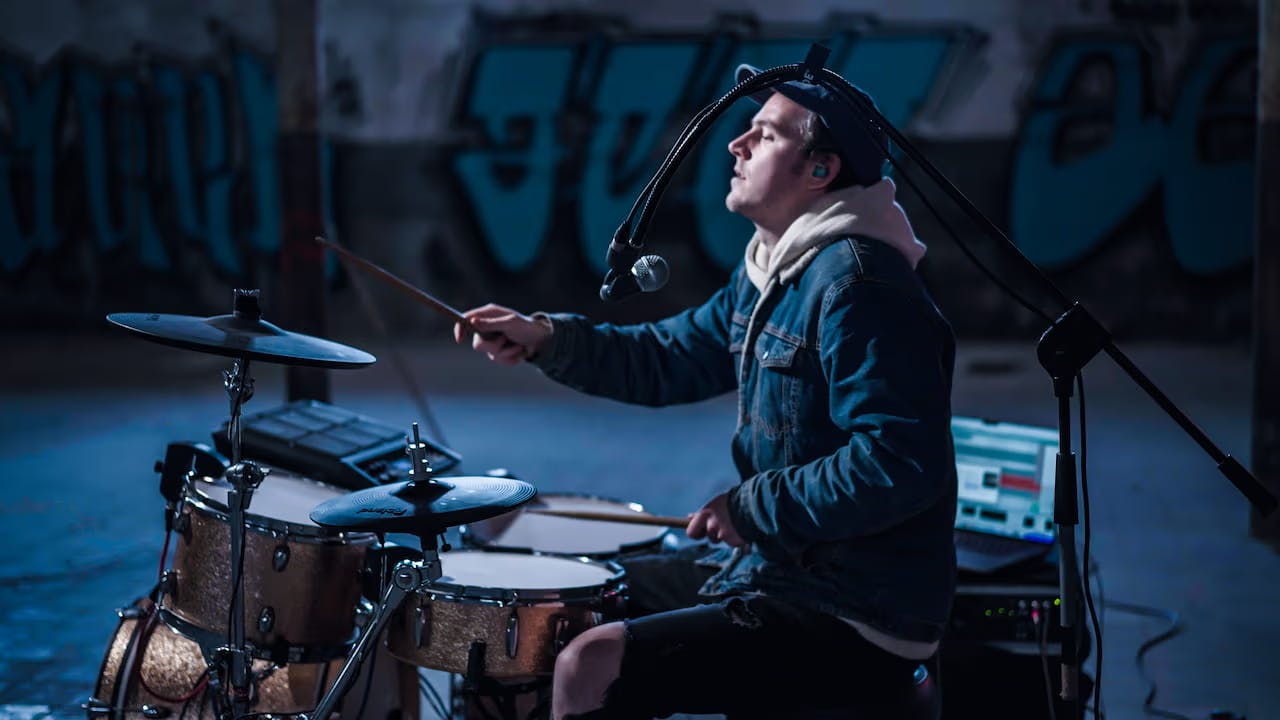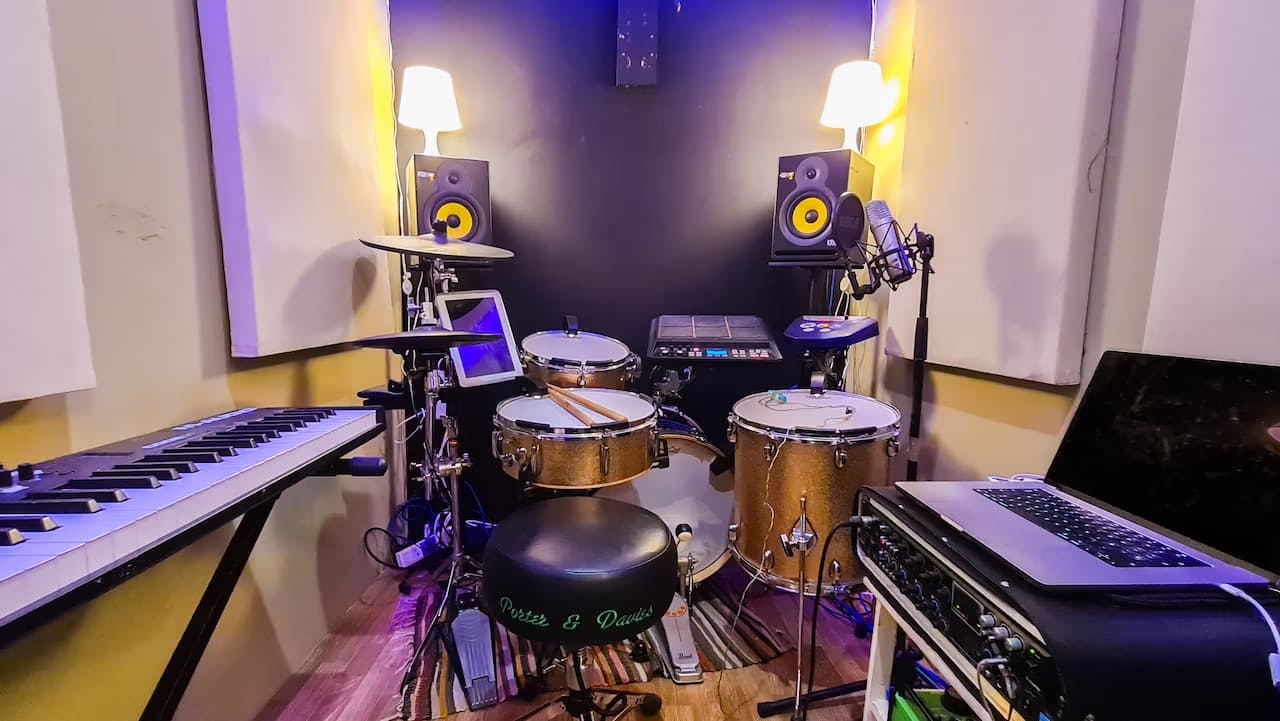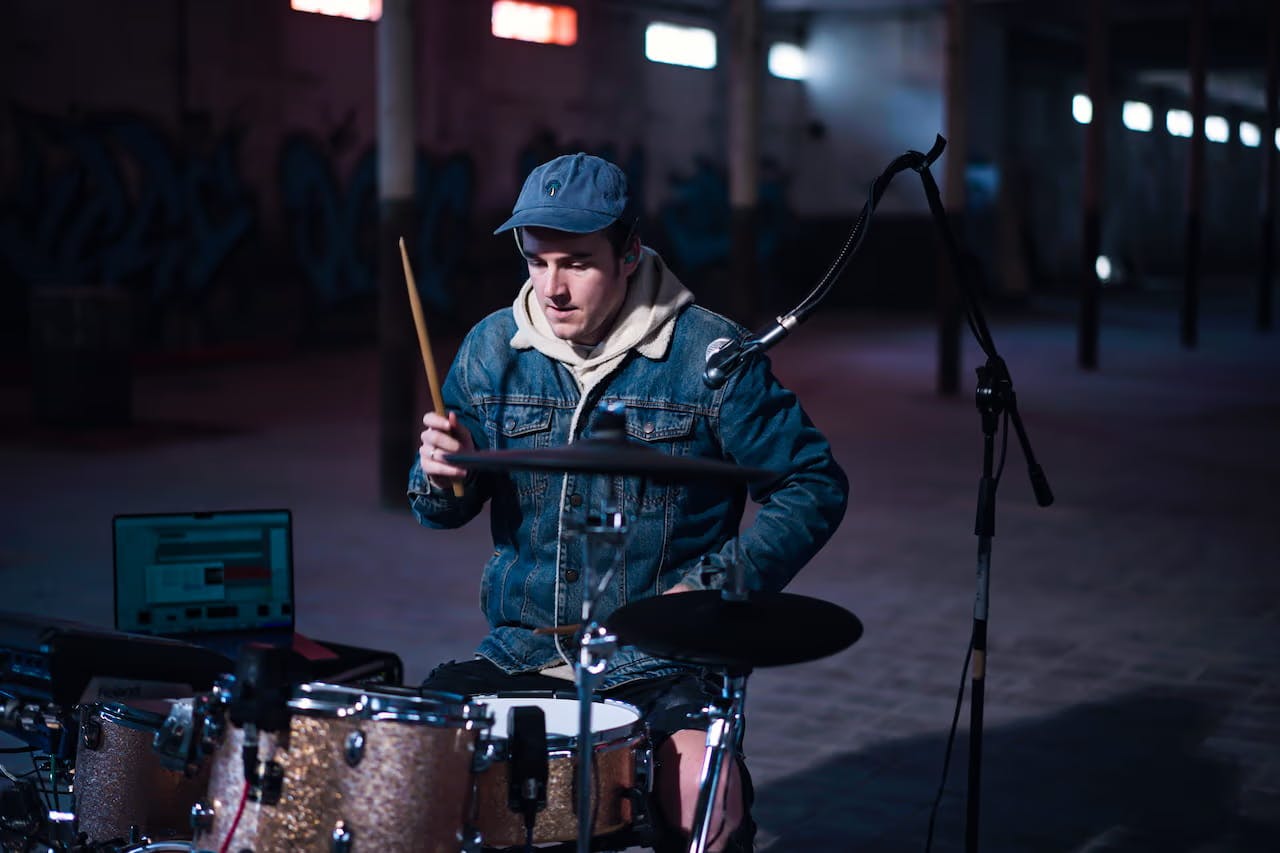
Chordsplitter is the alter-ego of British session drummer and producer Nick Roberts. Using a combination of Sensory Percussion, Ableton, and various other e-drums, Roberts creates dreamy synth-pop from behind the drums. Chordsplitter is truly a one-man band, singing and playing drums over highly structured tracks with automated chord changes, allowing for the entire thing to be played live with no backing tracks. We caught up with Chordsplitter ahead of the release of his debut self-titled album to talk about his musical journey so far.
How did you first get started with Sensory Percussion?
I bought the full sensor set after catching Ian Chang live in London. He absolutely blew my mind! After a lot of sonic exploration as well as consulting the Sensory Percussion forum, I really got on board with Sensory Percussion. Sensory Percussion triggered a chain of technological discoveries without which, I don’t think I'd be able to make the type of music I make today. And with the discovery of Mason Self’s very powerful M4L Sample and Hold devices, I’ve been able to make and release meaningful music that I am finally happy to put out into the world as my own. I'm really grateful for your amazing product as it has been integral to my musical journey. It's used on literally every track I produce!
What features of Sensory Percussion made you want to use it on every track?
One of the qualities that made me fall in love with SP is the sensitivity and dynamic range that the triggers are capable of. When talking about expressivity, they blow conventional electric drum kits I’ve tried out of the water and make me enjoy playing my acoustic/electric hybrid kit as if I were actually playing an acoustic kit.

Chordsplitter's setup:
- Drums: Gretsch Catalina (18 kick, 12 rack, 14 floor, 14 snare)
- Cymbals: Roland VH11 hihats and CY15R ride (Roland TD6 module)
- Additional pads: Roland SPD SX
- 4 x Sensory Percussion Triggers
- Focusrite Scarlett 18i8 interface
- 16” MacBook Pro M1 (2021) running Ableton 11 and SP software
- Porter & Davies BC-X personal monitor throne
The tracks on this album largely follow traditional pop song structures, changing chords as you go from singing the verse to the chorus, for example. How are you able to achieve this structure without any backing tracks?
I really wanted to avoid drumming along to backing tracks for this album. As a drummer, I want to express the music dynamically from playing my drum kit. So instead I pre-sequence MIDI tracks with chords in Ableton and then curate my choice of instruments and automate FX. All the notes on the album are produced by recording a live drum performance from the SP triggers and Roland V-Cymbals. The Mason Self M4L devices turn the MIDI drum notes into MIDI chords live in the moment, which are then fed into the synths and voila. It’s an immensely enjoyable thing to play!

For this record, did you only use Sensory Percussion to send MIDI data to Ableton, or did you also use audio samples inside of Sensory Percussion?
The majority of the drum sounds on the album are actually from a mixture of 3rd party drum libraries, but I also like to layer in SP kits underneath, blending the SP sounds with vocoders and resonators to give them extra harmonic qualities. The most obvious example of this is on track 4, "The Inspiration Saint," which uses toms from the Wordly Percussion kit in the Themed Kits set.
One of my favorite sounds on the album was this synthetic electric guitar sound I created using 3 drum kits (one of them glumOctopus from Galatic Brine) panned widely and applied Ableton's Spectral Resonator, which transformed the combination of kits into a really sweet overdriven guitar! You can hear it on a few tracks on the album, but its a main feature of Track 3, "Scattered".
Any Sensory Percussion-specific production tricks that you're particularly fond of?
A trick I actually learnt from the Sensory Percussion software is to use the velocity data and random LFOs in Ableton to modulate the synths e.g filter cut off, or pitch envelopes etc. When you hit a cymbal 10 times, you never hit exactly in the same spot or at the same velocity, even if you intended to, so it will always sound every so slightly different each time. So it’s a neat way of adding more depth and character to the synths and more comparable to how an acoustic cymbal sounds. Thanks for the trick!
